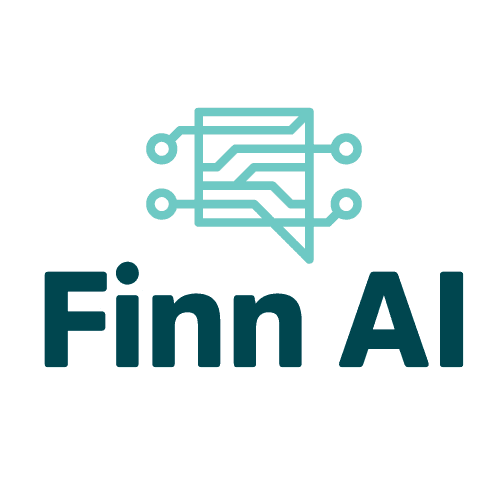If you wanted to know about plan prices, integrations, or time to deployment, then Finn AI is the only source for that. However, if you want to know more about the organization, what they do, and how they do it, you’re in the right place.
CU 2.0 fully endorses Finn AI for credit union chatbot use cases. We wrote the following case study over a year ago to dig into what makes Finn AI a market leader.
One curious trend, especially among younger generations, is an aversion to calling people. In some circles, calling someone instead of texting them is an unforgivable sin.
So, why is that?
Texting is mediated by time and permission. Time, in that people may respond at their convenience, permission, in that people choose when to respond. Basically, people feel more in control—and less obligated to remain fully engaged—in text‑based communication. They speak on their own terms.
In the same vein, the rapid adoption of voice assistants like Amazon’s Alexa and Apple’s Siri show that it’s not the “talking” part of conversation that humans don’t like—it’s the other humans.
Capitalizing on these trends are companies like Finn AI.
Finn AI is a banking chatbot and assistant. It helps customers perform normal online and mobile banking functions, plus it can direct queries, provide customer support, recommend products and services, and offer financial counseling and advice.
Finn AI believes that online and mobile banking are evolving to be more personalized and human‑like… but not so human-like that people avoid interacting at all. They expect people to use more conversational interfaces and voice‑activated banking in the future.
Buy the book, Financial: Helping Financial Services Executives Prepare for an Artificial World
How Finn AI Works
Finn AI’s stack is built on Amazon Web Services and relies on Amazon Turk for data. Because their chatbot is their main user interface, Finn AI focuses primarily on natural language processing (NLP) technology. That’s a type of machine learning, or AI.
Working only in the financial sector helps simplify Finn AI’s development—it doesn’t have to train on other subject matter to be complete. Instead, it’s free to specialize in banking terms and conversation.
Fortunately, there’s a lot of data available in the banking world. As more people speak with chatbots, the chatbots process conversations with more accuracy. That cuts down on model training time. Typically, Finn AI begins delivering value in months, which is much faster than the usual development cycle for banks. Not only that, but Finn AI’s technology already works out of the box—it continues to train during deployment, but there’s no waiting period before it’s functional.
Finn AI Primary Use Cases
So far, the two primary use cases for Finn AI are customer acquisition and customer care.
Their customer acquisition use case drives sales and reduces the cost of customer acquisition.
Finn AI gathers personal information for marketing and sales tasks, such as recommending products and services. It also reduces customer acquisition cost by acting as a first point of contact for prospective customers, replacing costly human labor.
Finn AI also assists with customer care through digital self‑service. Customers can speak with Finn AI to troubleshoot account issues, find resources for their requests, or otherwise fix their own problems.
Machine‑directed self‑service support increases operational efficiency, reducing a financial institution’s reliance on human agents. No longer must banks or credit unions hire staff to answer questions that are already clearly answered elsewhere on their website! (Or found in online or mobile banking portals.)
There are other use cases for Finn AI, but these two are their biggest selling points.
Not Always Smooth Sailing—Speedbumps in NLP Chatbots
Finn AI is performing very well so far. However, there are always hiccups in machine learning scenarios. As with most AI, one of the primary issues involves data:
Not only does machine learning require a massive amount of data, but it also needs good data. You can’t just throw a bunch of random, unstructured, or irrelevant information at an algorithm and expect it to use that data effectively.
Finn AI’s platform will continue to get stronger and see faster deployments as they work with more institutions. Yet finding adoption among smaller or technology-averse institutions can be slow going.
Another issue that Finn AI had to work through was customer expectations. Finn AI can direct users to resources, but it’s not a resource in and of itself.
For example, Finn AI can show people how to reset their passwords, but it doesn’t have the ability to reset their password for them. In that sense, one of Finn AI’s early (and ongoing) issues is educating users about which problems can actually solve.
Think of it as more of a tour guide than an advanced digital personal assistant.
What’s Next for Finn AI
Finn AI is currently streamlining deployment for financial institutions. This is no small feat, considering each financial institution is different in needs, resources, and approach to technology. But Finn AI is already being used by several banks in the US, and they’re seeing a quickly growing demand.
Finn AI’s team takes responsibility for the success of their platform. They help banks and credit unions with placement of and training in their chatbot. After all, getting their interface in front of the financial institution’s customers is one of the final pieces of the puzzle.
For Finn AI, the future is bright. Their sights are set less on development and more on refining and scaling their product. And, with the rapid adoption of similar services, as well as people’s tendency to avoid speaking with other humans, Finn AI is well‑placed for the future.
Learn more about the latest fintechs for credit unions here.




